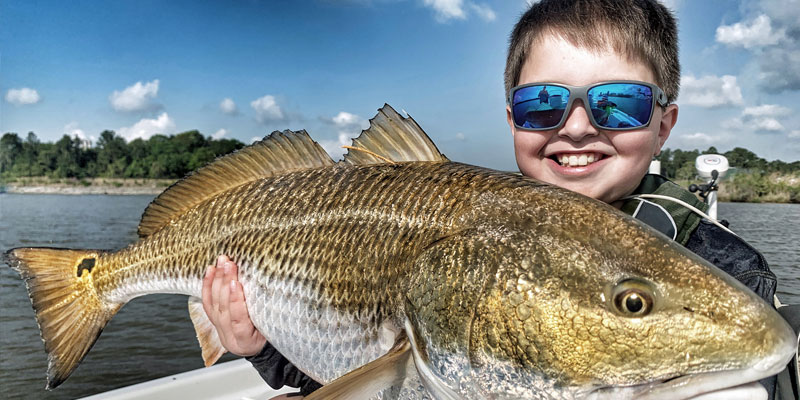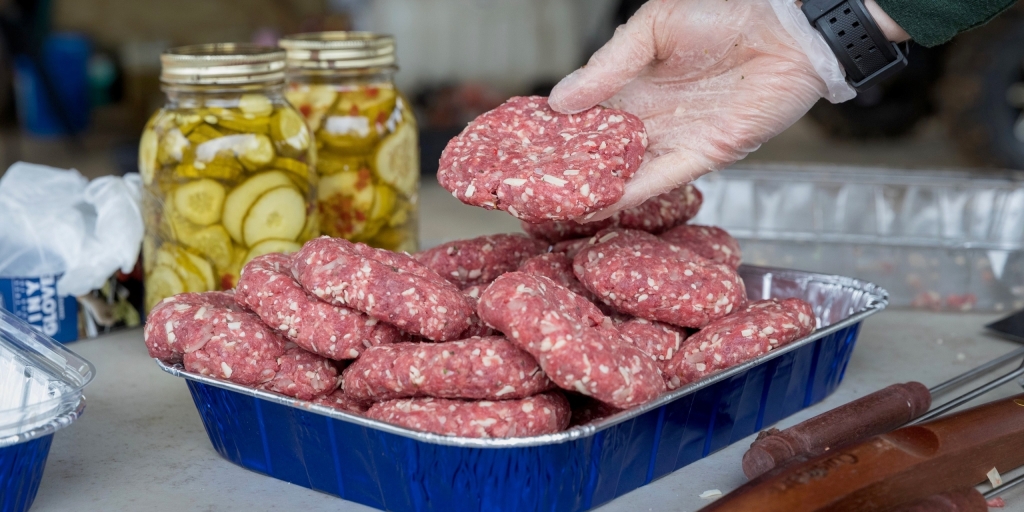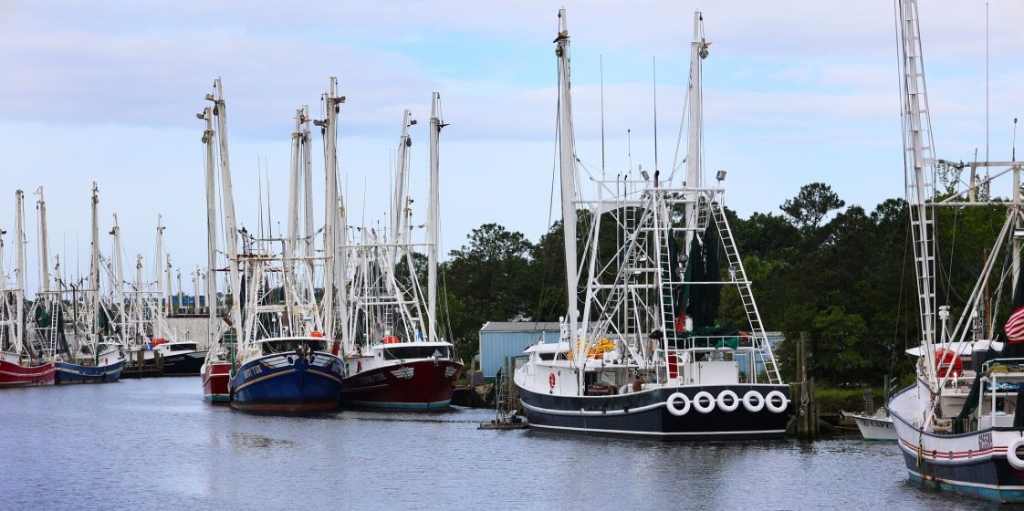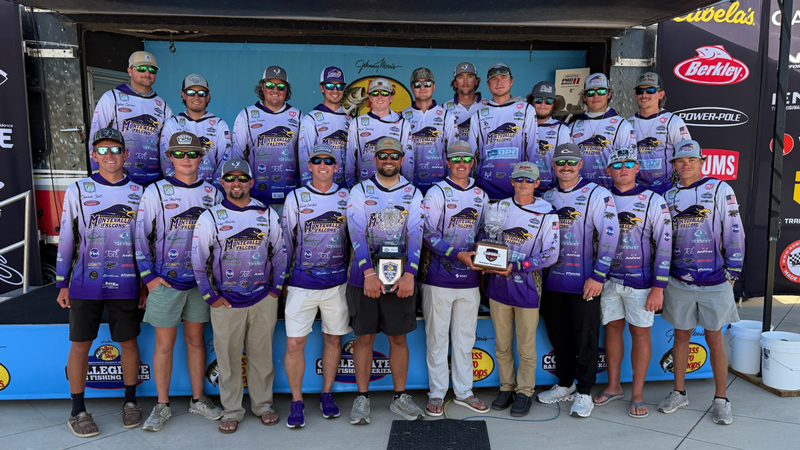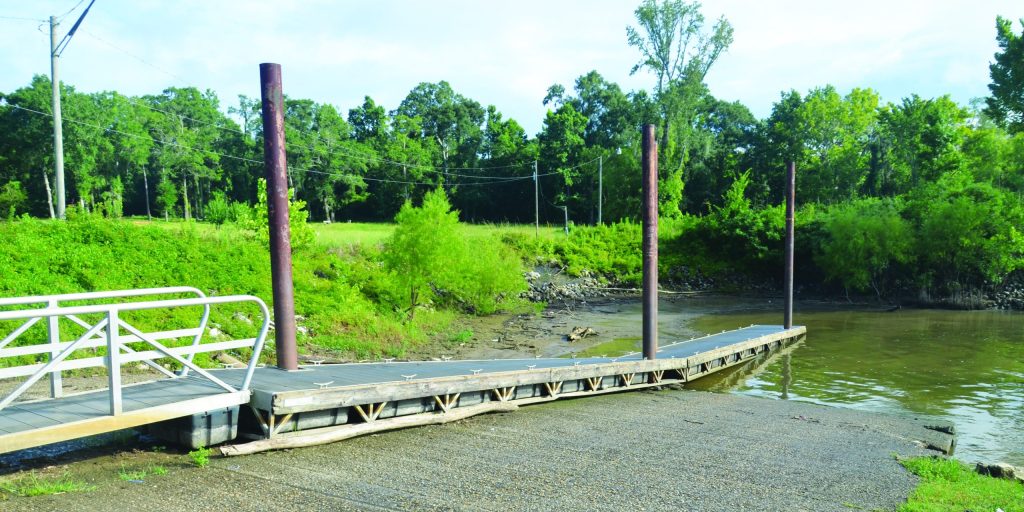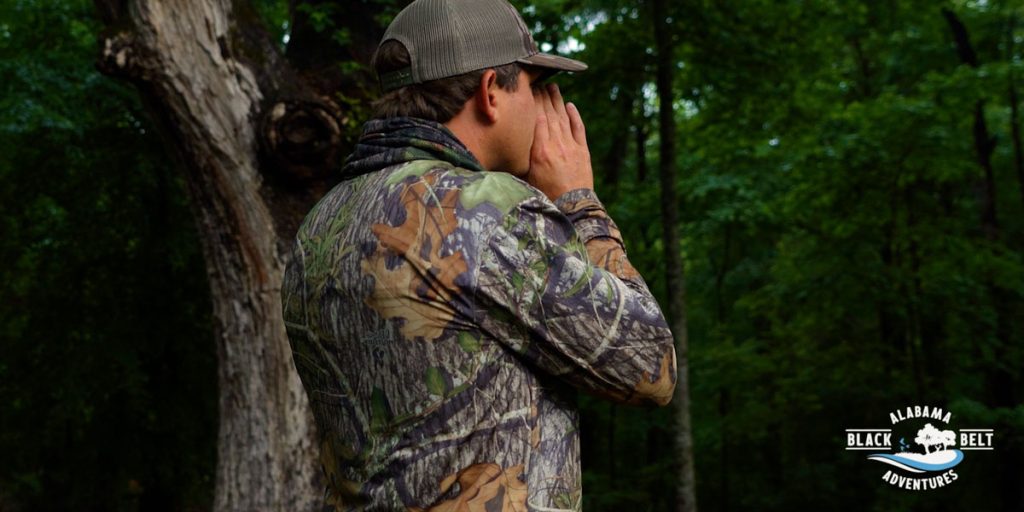Thanks to a tagging program started by CCA Alabama in 2017, Alabama anglers who target speckled trout and redfish know a great deal more about the movement and growth of these prized inshore species.
The TAG Alabama program, which is compiled and analyzed by the University of South Alabama (USA) School of Marine Sciences and Dauphin Island Sea Lab, enlists CCA (Coastal Conservation Association) members to tag trout and redfish (red drum) and rewards anglers who file a report after a tagged fish is recaptured.
For the first time in a year because of COVID restrictions, CCA Alabama was able to hold tagging seminars last week in Birmingham and Daphne to give interested anglers guidance on how to properly tag the fish to ensure the trout and redfish are not injured and the tag is properly secured.
CCA Alabama Executive Director Blakeley Ellis and USA graduate student Dylan Kiene teamed up to provide instruction in safe tagging techniques and an update on tagging program data.
Kiene, who is studying several inshore species at the Dauphin Island Sea Lab Fisheries Ecology Lab, said speckled trout seem to be constant travelers, but redfish are unpredictable.
“We had one redfish tagged at Dauphin Island that went to Pensacola in about 30 days,” Kiene said. “We had one redfish tagged near one of the islands in the Mobile River that went all the way to Lake Pontchartrain in Louisiana in 130 days. On the other hand, we had one red drum that was recaptured three times by Capt. Richard Rutland in the same spot, the first time in 2017 and twice in 2018.”
Kiene said his program predecessor, Reid Nelson, observed little to no movement from red drum in certain locations.
“When Reid was doing acoustic work on red drum, he was tagging fish in Dog River and Fowl River,” Kiene said. “One of the things you look for when you’re doing acoustics is that if a tag is detected constantly on the same receiver, you may assume the fish is dead. That was what he thought until some of the fish were recaptured in the same spot. They were literally within 100 yards from the spot where they had been tagged. They had enough food. They were happy. But speckled trout are basically always on the move. You’ll catch them in the same spots at the same time of the year, but they’re always moving.”
New to the Tag Alabama program is the bull redfish tag that was handed out to participants last week. Fish larger than 26 inches are considered bull reds, but Kiene would prefer to see anglers tag fish 30 inches and larger.
“With the bull red tags, once we get enough of these out, it’s going to be really interesting to actually see if these fish are going offshore where they’re supposed to be spawning or going up into the Delta,” Kiene said.
Ellis said CCA Alabama also recently approved funding for USA Marine Sciences to do a study on offshore bull reds with acoustic and satellite tags.
Anglers participating in the TAG Alabama program can report tagging data through the Fishing Chaos app, at tags.usouthal.edu, which is best used on a computer, or 1-800-372-5950. Kiene said the Fishing Chaos app blurs the angler’s tag capture location data to keep that information private.
Ellis said the tagging program is for legal-sized fish only. For speckled trout, the minimum total length is 15 inches. For redfish, the minimum total length is 16 inches. He said when a fish is recaptured, two reports are sent via email, one to the angler who tagged the fish and one to the angler who recaptured the fish.
“Our recapture rate in Alabama is pretty high,” Ellis said. “I think that is due to a more educated group of anglers through the seminars, which results in more of the tags staying in the fish, therefore increasing the odds of tagged fish being recaptured.”
Since its inception, TAG Alabama has tagged 2,615 redfish with 424 recaptures for a recapture rate of 16 percent, Ellis said. For speckled trout, 2,364 fish have been tagged with a recapture of 206 fish for a recapture rate of 8.7 percent.
“That actually is a really high recapture rate,” Kiene said. “For the larger tagging programs, a 4- to 5-percent recapture rate is what they normally see. That red drum recapture rate is extremely high. Redfish are mostly homebodies and tend to stay in the same areas. Those areas also tend to have a lot of fishing pressure, and the fish get recaptured more. Speckled trout move around a lot more and are a little more difficult to catch compared to red drum.”
Ellis said TAG Alabama has been a big success for CCA Alabama.
“This is a neat opportunity for citizen science, to have anglers participating in the research,” Ellis said. “This type of program gets more people involved and is more efficient in getting fish tagged.”
In related tagging news, the Alabama Marine Resources Division (MRD) has provided funding for Kiene and the Fisheries Ecology Lab to capture and tag Southern flounder, a species that has seen a significant decline during the past 10 years. In 2019, MRD increased the minimum total length to 14 inches for flounder with a bag limit of five fish per person. The harvest of flounder for recreational and commercial anglers is prohibited during the entire month of November to protect the fish migrating to spawn.
“We’re acoustically tagging Southern flounder in the fall in Mobile Bay,” Kiene said. “We have an acoustic array of receivers. When the tagged fish gets within range of the receiver, it will actually log the information from that fish. We have the entire Mobile Bay encapsulated with the receivers. We’re tagging these fish in the fall to see how many of these fish are actually migrating offshore. We’re also collecting otoliths (ear bones) for age information, and we’re doing some reproductive work.”
Kiene said Southern flounder females get considerably larger than the males, which don’t get much larger than 13 inches and spend most of their lives offshore.
“We’ve been going out in the fall in the upper parts of Mobile Bay, catching these fish on hook and line and inserting acoustic tags,” he said. “In 2019, we tagged 67 flounder, 55 of which were in Mobile Bay. In 2020, we ended up with 70 tagged. This year, we’re going to try to tag 100. We don’t have all the data from 2020, but we have the data from 2019. About 30 percent of the flounder we tagged are leaving Mobile Bay. And we’re tagging big flounder too. We’ve had them six and seven pounds. We even had one 10-pounder. That was an incredible fish. But we won’t know how many fish are going offshore until we can get several years of data.”
One interesting aspect about the flounder tagging study is they seem to have an instinct akin to salmon.
“The big fish are leaving the rivers in the late fall and returning about six months later,” Kiene said. “Those fish are returning to the exact same rivers they were tagged in originally. It’s a characteristic we call homing, kind of like salmon. That’s another part of fisheries that isn’t fully understood – how fish figure this out, whether it’s water chemistry or magnetism or whatever. We’re putting that all together to research the decline in the fishery and how we can get it back at least close to what it once was.”
MRD Director Scott Bannon said the TAG Alabama and Fisheries Ecology Lab tagging efforts greatly aid in the management of these species.
“Inshore tagging programs provide valuable data regarding the movement of fish throughout the seasons in addition to providing catch effort data,” Bannon said. “The data collected in tagging programs are valuable because they assist us in our management decisions. The more people that participate and the more fish that are tagged just increases the flow of valuable data.”
David Rainer is an award-winning writer who has covered Alabama’s great outdoors for 25 years. The former outdoors editor at the Mobile Press-Register, he writes for Outdoor Alabama, the website of the Alabama Department of Conservation and Natural Resources.




